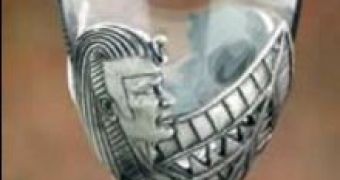Tutankhamun was buried with a considerable supply of white wine. This is what the residue analysis from six jars in his tomb has shown. The discovery surprised scientists, as they previously thought that white wine became available in Ancient Egypt only in the 3rd century AD, 1600 years after Tutankhamun died.
To determine the nature of the residue in Tutankhamun's jars Rosa Lamuela-Ravent?s and her colleagues from the University of Barcelona, Spain, used liquid chromatography and mass spectrometry. These techniques are able to determine the exact chemical composition of the analyzed substance. They have found tartaric acid, a chemical characteristic of grapes, but only one jar contained syringic acid, found in the skin of red grapes. The red wine is red due to this skin and the absence of syringic acid in the five jars suggests the wine in them was white.
While modern manufactures of white wine often produce it by removing the skin of red grapes, it is unlikely that Egyptian wine makers did the same. Thus, probably white grapes were already known in ancient Egypt.
Red wine was often taken by pharaoh in their tombs for the afterlife. It now seems that white wine was also on the menu, and that people like Tutankhamun appreciated it much more than red wine. "It must have been considered a very good drink," says Lamuela-Ravent?s.

 14 DAY TRIAL //
14 DAY TRIAL //